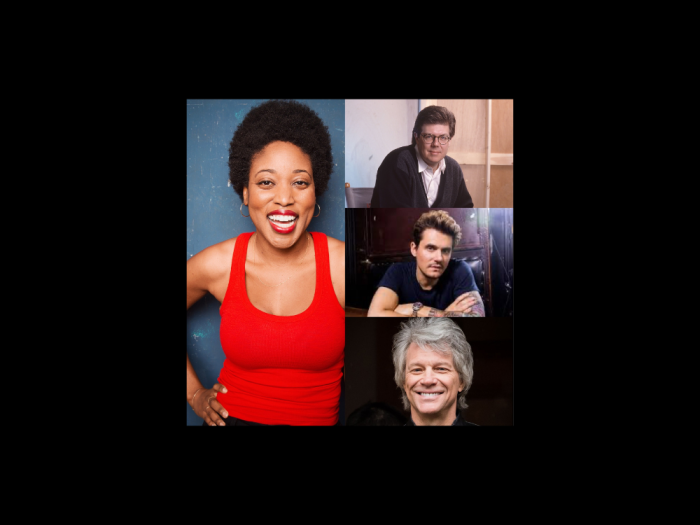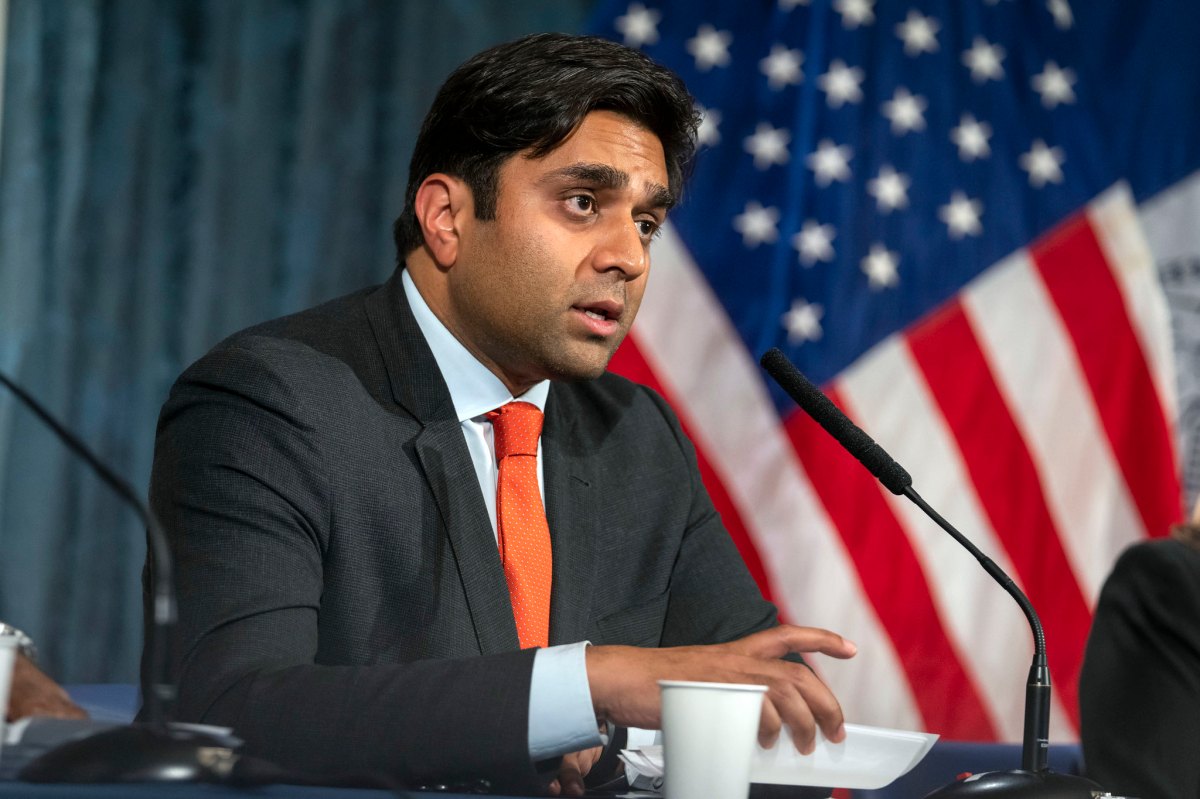By Bonnie Rosenstock
When the two wardens and vestry of St. Mark’s Church in the Bowery chose Reverend Winnie Varghese to be their new pastor and priest in charge, they got a full complement of credentials: a chaplain, a community organizer, a self-described systematic thinker who likes to finish what she starts, and a gay woman of color. In other words, a perfect fit for this activist, artistic, diverse East Village community.
“By the time she came to us after our long search, we just grabbed her,” said junior warden Howard Jones. “We had looked at so many people for so many years. We were one year without a priest, and before that with Julio Torres, it was never a settled situation. Winnie is pastoral, good with people, obviously intelligent and familiar with this kind of activist atmosphere. Our visions seemed to match.”
Reverend Varghese (pronounced Var-geeze) confessed that the feeling is mutual.
“St. Mark’s has a real heart for justice in its creative worship and community,” she said. “It’s very welcoming and inclusive of all kinds of people. This is what we read and write about and say we should be as a church.”
Reverend Varghese is petite and soft-spoken, with enormous dark round eyes that draw you into her confidence and a bright, welcoming smile. She acknowledged that St. Mark’s, at 131 E. 10th St., missed having a pastor, someone who went to visit the sick in the hospital, made home visits, knew congregants’ family life, “someone who cared about them and made it a community supportive of one another,” she said. “I’m a chaplain, and that’s what a chaplain does.”
Because of the church’s longstanding history of activism, Varghese doesn’t feel the need to change the church’s focus but to build on it. She thinks they need to and can have a larger impact in the neighborhood and in the city.
“We need some organization to do internally. One of the challenges is that it’s a church full of artists,” she noted. “In the best sense of that term, they follow their passion. It’s what I love about the community. But I am not an artist.
I might even be overly analytical, so I think I bring a different way to frame who we are. I am very task oriented, which is a new sensibility here.”
The training ground for her admitted “uptightness around order” might have its roots partly in her outreach work with the mentally ill and homeless in Long Beach, California, as part of a yearlong Episcopal intern program. (The second year she was the program’s case manager.) It was in 1993, a year after the Los Angeles riots, and Varghese was 22. The Church’s philosophy was to place young adults in parish houses and rectories and have them see day to day what poverty in America looked like. Her job was to hang out with the homeless in their encampments, establish a friendship and ask if they needed the church’s services, such as therapies, medical attention and medicines, but not to force anyone or disrupt their lives. She realized that it wasn’t enough to help just one person with his or her own struggles, “but if we were organized enough to work on mental-health services in the state of California, we could make an impact on the entire community’s lives,” she explained. “So my thinking tends to be like that. I would like to bring that back from St. Mark’s past.”
The voice of the people united is a powerful tool, she said.
“A priest can be an activist, and I can become well known for that, which is fine,” she said. “But the real power of the church is when the people in the pews stand up and say, ‘We believe such and such is wrong,’ and it doesn’t even have to be only members of the church.”
She also credits her family background for her compassion for the marginalized. Her parents are from Kerala, a state in southwestern India, which is well known for its radical history with development, Varghese explained, and for its nearly 100 percent literacy rate for both men and women, compared to around 30 percent for other parts of the country.
“There are still class and caste barriers, but through education, nutrition and healthcare, in one generation the landscape shifted radically. My parents are very proud of that,” she said.
Varghese, who will turn 37 at the end of May, was born in Dallas, Texas, where her father was attending school. After he finished, the family moved back to India, but returned to the U.S. a few years later. Her first language was Malayalam, which she has since forgotten. She bears no trace of a Texas twang, either. Because she learned English when she was 4 years old, she said her clear, crisp manner of speaking is “very intentional.”
To connect back to her parents’ roots, she thought she would dedicate herself to international development work. So she enrolled in a small college in Atlanta, near the Carter Center, founded by former President Jimmy Carter and his wife, Rosalynn. A required religion class called “Women in the Hebrew Scripture” was a life-altering experience.
“I was raised in the Episcopal Church and thought it was fine, but not something I would do my whole life,” she recalled. “But I got the message of hope in the Scripture. It was even more radical than just attending to physical needs. It was about human dignity and values as children of God. It opened the whole tradition up to me, and I didn’t know what else to do but to be a priest.”
She graduated from Southern Methodist University in Dallas in 1994 with a major in religious studies. After her Long Beach internship, she came to New York and studied at the Union Theological Seminary, sponsored by the Diocese of Los Angeles. Three years later in 1999, she graduated, and in January 2000, was ordained a priest. She went back to the Los Angeles Diocese to work in a church on the city’s west side and at the same time was the chaplain at U.C.L.A. She returned to New York in fall 2002 to be the Episcopal chaplain at Columbia University, where she will continue part time until the end of May.
She started at St. Mark’s on March 1.
St. Mark’s parishioners number around 60 people for services, mostly neighborhood residents, diverse in age, a blend of newcomers and old-timers.
The mix is almost evenly divided between white and African-American, with a few Latino families.
“I might be the Asian population,” Reverend Varghese quipped. “It’s unusual, because churches tend to be monolithic racially. We have a great starting point.”
Varghese came out when she was 17 in the late 1980s. The Los Angeles Diocese had a “don’t ask, don’t tell” policy, but her bishop was very supportive, and the Union Theological Seminary in New York was very progressive.
“It was impossible for me to write my spiritual autobiography and not talk about coming out. ‘Integrity’ was the word,” she stated.
She lives with her partner of six years, a feminist activist, and her partner’s two children, a girl, 13, and a boy, 11.
“They feel very welcome, and she and the kids really enjoy St. Mark’s,” Varghese said. “They have never said that about a church before.”
One of the reasons Varghese said she moved to the East Coast is because it is more tolerant than the West Coast.
“It wasn’t clear for me that I would get a job in Los Angeles because I was gay,” she said. “In New York, it is a non-issue in hiring.”
There aren’t many out women of color in leadership positions in the Church, she noted. They might be on staff, but rarely are they in charge. Gene Robinson, the bishop of the Diocese of New Hampshire, made it possible for gays to work openly in the Church. She remembers when Bishop Robinson’s consent was confirmed at the General Convention in August 2003. She was there but couldn’t stay for the vote because she had to officiate at a wedding at Columbia.
“I was so mad because I had to leave,” she recalled. “I was walking uptown to go into the chapel when a friend called from the convention floor to let me hear the roar when it passed. Something had lifted from the top of my head. I hadn’t thought about glass ceilings, but I felt taller. When I was thinking about leaving Columbia and where I would apply next, it occurred to me that I had many more options than I would have had a few years ago because of Bishop Robinson’s bravery.”
Senior warden Cynthia R. Copeland, who is African-American, said Varghese has the right makeup for the job, and that having someone of her caliber to lead the church is overdue.
“It’s time St. Mark’s had a woman — and a woman of color,” Copeland declared. “She’s perfect, just what we wanted. She brings vitality, vision and compassion to the community. Further, she has experience in urban issues. It might be trying and challenging at times, but she believes in social justice and is no pushover.”
Varghese has a number of projects she would like to get up and running. She would like to launch a film series or something “very Episcopal” on how to be a member of the Church. She is also considering a weekly evening educational series, meal included, open to the entire community.
“There are great speakers in the city. I would like the church to be a place you can go to in order to hear big conversations and be a part of them, like housing in New York, or how the church is working on the inclusion of L.G.B.T. people,” she said.
This summer she hopes to initiate a community gospel choir open to all who are interested. Additionally, she would like to partner with the arts programs that are housed in the church, like Danspace Project, the nonprofit performance venue for experimental choreographers; the Poetry Project, and Richard Foreman’s Ontological-Hysteric Theater.
“I would like them to be physical partners in ministry with us, not simply tenants,” she said.
But a top priority, which she acknowledged is “boring,” is to fix the clock.
“It’s an attainable goal, something we can offer to the neighborhood as a positive sign of what we did,” adding “and the garden needs to be made safer.”
“I would like us to become a very vibrant, rich, full, worshipping community again,” she affirmed. “I would also like what we do together at St. Mark’s to be sustainable. I don’t know if we can do it hugely different, but I do think we will be a different place in a couple of years.”





































